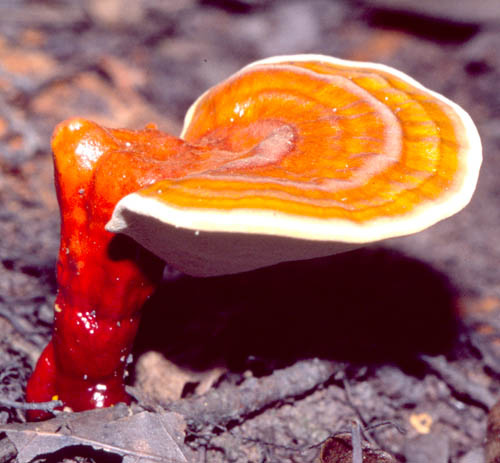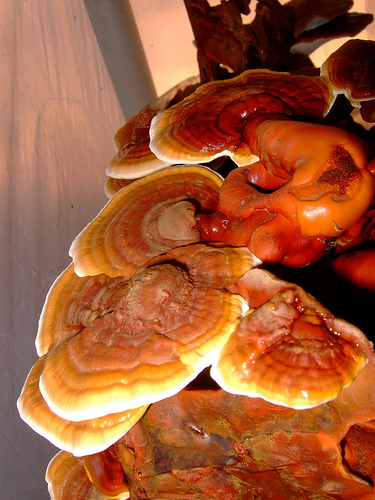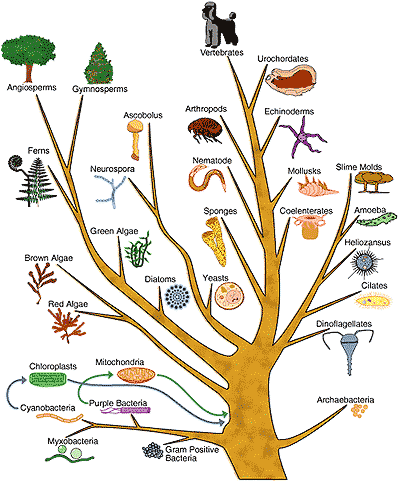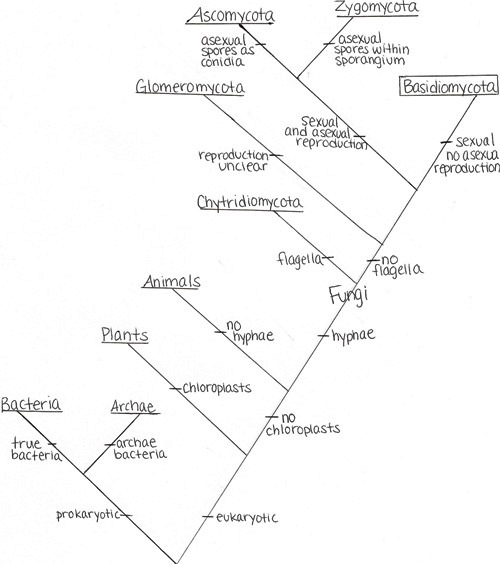Classification
 A few common names: Reishi, Lingzhi, Ling
Chi, Lacquered Bracket, Mannentake, and “Mushroom of
Immortality”
A few common names: Reishi, Lingzhi, Ling
Chi, Lacquered Bracket, Mannentake, and “Mushroom of
Immortality”
Domain- Eukarya- "Eu" meaning true and "karya" meaning nucleus. Organisms, including G. lucidum, possess a true nucleus, cytoplasm, and other membrane bound organelles.
Kingdom- Fungi- includes heterotophic non vascular organisms that have a chitinous cell wall, reproduce via spore production(sexual and/or asexual), and from hyphae as the vegetative growth state.
Phylum- Basidiomycota- "Basidio" meaning small pedestal" and "mycota" meaning fungus. As stated above, the defining feature for this phylum is that all fungi in this group produce a club shaped reproduction organ called a basidium. Check out the Wolf-Fart Puffball, another sweet basidiomycota!
Class- Agaricomycetes- includes mainly
terrestrial fungi that have a relationship with wood, mostly
decayers but also can be parasites or symbiotic.
Order- Polyporales- "Poly" meaning many and "porales" meaning pores. This means that fungi in this order have many openings fruiting bodies. These fungi that are normally seen as wood rotters in forests.
Family- Ganodermataceae- "Gano" meaning shiny or bright and "derma" meaning skin. These are saprophytic fungi that feed on wood, but also has bright or shiny skin covering the fruiting body.
Genus- Ganoderma- "Gano" meaning shiny or bright and "derma" meaning skin. Includes fungi species that attacks both hardwoods and conifers. Includes fungi like Ganoderma lucidum but also other fungi like Ganoderma applanatum.
Species- Ganoderma lucidum- the defining characteristic of this specie that separates it from others in the Ganoderma genus is that an association with hardwood trees is necessary. Another thing to note is that G. lucidum has hyphal walls that are thicker than other species in the same genus.
Translation of the Reishi mushroom scientific name:
Ganoderma-Gano-brightness or sheen and derma- skin(Greek) lucidum- shining(Latin)
This first phylogenetic tree is more of a
general overview of life on Earth. It takes a look at
basic morphology or structure of life on Earth. At the base of the tree
you have the simplest organisms.  This includes the archaebacteria and the true bacteria. If you were to work
your way up to the left you would run in the simple
photosynthetic organisms, the red and brown alga. The next
branch over contains the plants. At the top are the most
complex plants which are the angiosperms and gymnosperms.
Located to the right of the plants is the fungi branch.
Towards the base are single celled yeasts and further up are the
more complex forms which will be addressed in the next tree.
One branch over is all about the animals. Once again, at
the base are the simple yeasts and cnidarians. Being the
most complex, the vertebrates are located at the top. The
thin branch to the right contains a lot of weird forms of life
such as the slime molds, amoebas, ciliates and the dinoflagellates.
This includes the archaebacteria and the true bacteria. If you were to work
your way up to the left you would run in the simple
photosynthetic organisms, the red and brown alga. The next
branch over contains the plants. At the top are the most
complex plants which are the angiosperms and gymnosperms.
Located to the right of the plants is the fungi branch.
Towards the base are single celled yeasts and further up are the
more complex forms which will be addressed in the next tree.
One branch over is all about the animals. Once again, at
the base are the simple yeasts and cnidarians. Being the
most complex, the vertebrates are located at the top. The
thin branch to the right contains a lot of weird forms of life
such as the slime molds, amoebas, ciliates and the dinoflagellates.

The second phylogenetic tree to the left focuses mainly on reproduction and as well as a few morphological features. Starting at the very bottom, the first split comes with the prokaryotes and the eukaryotes. This separation is due to the fact that eukaryotes have a true nucleus while the prokaryotes do not. Eukaryotic nuclei have all of their genetic material encased within that organelle. The next division comes with the plants breaking off due to the fact that they have chloroplasts and the remaining organisms do not. The next separation comes with the animals and fungi splitting up. Fungi have hyphae for growth while animals don't have this feature. The remaining divisions are within the kingdom fungi. G. lucidum belongs to the phylum basidiomycota. This means that its main form of reproduction is through sexual spores that get produced externally. No other phyla of fungi reproduces in this same way.
Continue on to Habitat to find out where these mushrooms like to call home.